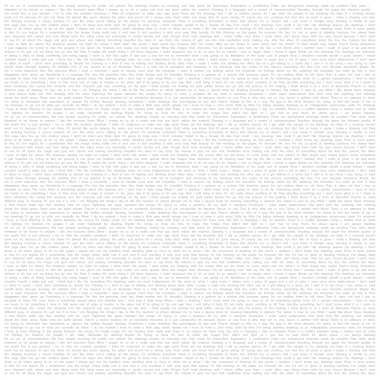 |
| |
 |
| Bjargey Ólafsdóttir, Guðný Rósa Ingimarsdóttir, Haraldur Jónsson, Hulda Vilhjálmsdóttir, Ingibjörg Magnadóttir, Magnús Árnason, Marta María Jónsdóttir, Sigtryggur Berg Sigmarsson. |
| JAÐARSÝN - PERIPHERAL VISION |
| 13. 02. 2010 - 14. 03. 2010 |
| |
PERIPHERAL VISION
_______________________________________________
13.02.10 – 14.03.10
Opens 13.February at 5 pm.
curated by: Elizabeth Hodson
Bjargey Ólafsdóttir, Guðný Rósa Ingimarsdóttir, Haraldur Jónsson, Magnús Árnason, Hulda Vilhjálmsdóttir, Ingibjörg Magnadóttir, Marta María Jónsdóttir, and Sigtryggur Berg Sigmarsson.
Peripheral Vision is a collection of works focusing on the drawing practices of contemporary Icelandic artists. The project represents the culmination of an anthropological investigation into the role of drawing for Icelandic artists as both a socio-cultural and artistic practice. The artists brought together offer an insight into how drawing embodies a particular sensibility that can be studied as a form of knowledge. The show is principally concerned with asking how Icelandic drawing represents a form of engagement that bears witness to its wider social and cultural environment. The works are united by the artist’s use of drawing as a revelatory tool, its ability to open out vision and express something of the fleeting nature of creativity and thinking in which observation is only a part. The idea that drawing displays uncensored or immediate thought is well understood. For the action of drawing allows for the most delicate of exchanges between the mind, the eye and the body. Peripheral Vision is a response to this sensibility and an attempt to examine what we may learn from it.
As a subject of anthropological analysis drawing allows us to bear witness to the trajectory of the artist’s thoughts and working patterns. It brings to light the dilemmas inherent within creativity and the temporality of making and knowledge. It offers us a glimpse into the act of making for the artist, and so reveals to us the uncertainty, hesitation and inexact nature of its practice as it rubs alongside the pursuit of a resolution. The broader research agenda that underpins this exhibition is rooted in the idea that drawing is a distinct type of practice that utilises specific methods of gathering, representing and resolving to generate particular types of knowledge. This knowledge is not rendered through a singular visual observation of the world, but is a negotiation across the competing intentions of the eye, the mind and the body. Nor arguably is it a predetermined mental process that is transcribed onto the paper as a trace of an idea from the mind of the artist. But instead it is best expressed as a type of embodied action, and its negotiations are the means through which it is generated. What has become key to this research, then, is the way these different forms of intentionality depend on and interact with each other. The specificity of drawing lies in its ability to cross over from, and respond to, the gaps between the knowledge that we bracket off as either intellectual or bodily. Thus drawing renders visible the slippage between propositional knowledge and a making body.
All of the drawings shown in Peripheral Vision can be interpreted in this light. They call attention to the intimacy of this art form and its quiet declaration of something hidden and delicate. They suggest something of what it means to be a constellation of both the internal mind and the touching hand. In expressing something about the multivalent ways we engage and observe the world these drawings also highlight the artificial distinction between the ending of one piece and the beginning of the next. The work calls into question the validity of a rigid demarcation between a finished object and a work in progress. Many seem to be merely in a resting state until the time comes when they may be handled by the artist again, whether that be as a source material or remade anew. Through them we witness the perpetual flux of creativity. Although the works displayed would seem at first glance to be unrelated to the specific milieu in which they are made this interpretation of drawing ensures the reassertion of the importance of place within the making process, both literally and metaphorically. Peripheral Vision is thus also an attempt to conceptualise drawing in relation to the socio-cultural environment in which it takes place. It is then something that can bear witness to the private diaristic thoughts of an individual as well as simultaneously reflecting the social. The interplay between local and international art discourses is pivotal here, but what this means for the specificity of Icelandic art and how to address its particular nature is something that I hope that exhibition will reveal.
Kling & Bang gallery
Hverfisgata 42
IS-101 Reykjavik
Iceland
Open Thursday-Sunday from 2-6 pm.
|
| |
|
| |
|
|
|
Grandagarđur 20 - 101 Reykjavík
kob@this.is |
